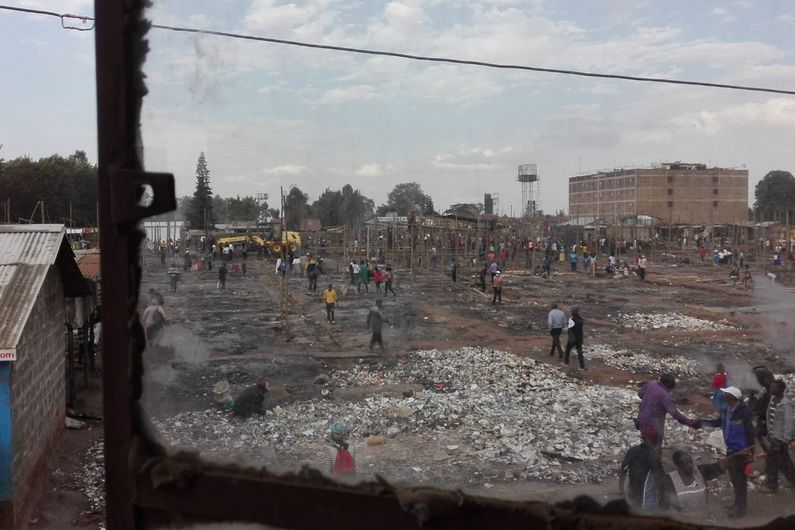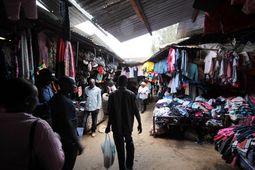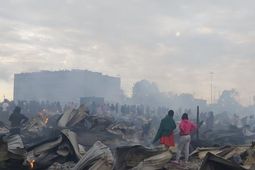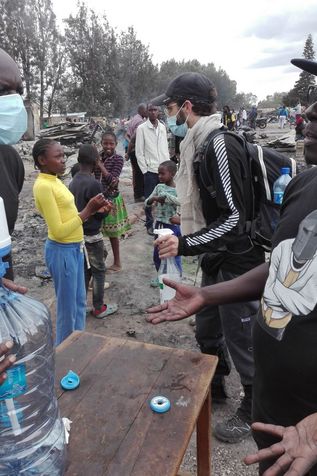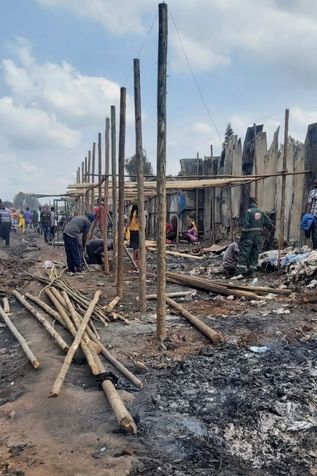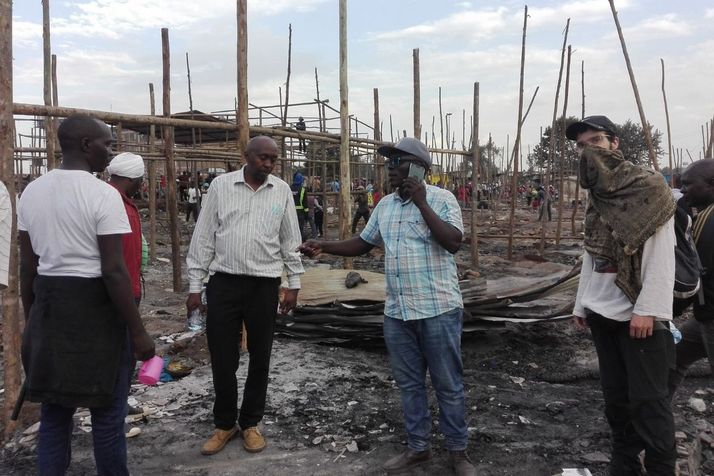Bringing hope to a Kenyan community devastated by fire
- UdeMNouvelles
09/12/2023
- Martin LaSalle
On a study trip to Nairobi, architecture professor Georgia Cardosi and a student helped out after a massive blaze ravaged a shantytown.
Georgia Cardosi, a professor in the Architecture School at Université de Montréal, made an unexpectedly eventful trip to Kenya during the summer. She was in Nairobi from June 3 to 17 for the second session of the UN-Habitat Assembly as a member of the Réseau d’Échange Stratégique pour une Afrique Urbaine Durable (RESAUD) and to continue years of work and engagement with a vulnerable community living in informal settlements.
Cardosi has been studying problems of urbanization in Africa since 2004, particularly the challenges faced by the residents of the Young Humanitarian Architecture Coop Kaza in Kibera, Kenya’s largest slum.
Her research has led her to delve into the complex issues of land security, urban land tenure rights and severe insecurity in these areas. In the process, she has developed a deep connection with the community she has been supporting for almost two decades.
Combining science and humanitarian aid
Over the past three years, Cardosi has led a scientific and humanitarian effort by setting up a multidisciplinary, participatory, international design workshop for architecture students at UdeM.
The fall workshop, conducted in collaboration with the Department of Architecture at the Jomo Kenyatta University of Agriculture and Technology (JKUAT), develops low-cost housing projects for slum communities using local building techniques, local materials and sustainable architectural principles. Students from the two universities have worked together despite the challenges created by the pandemic.
This collaboration spawned the Young Humanitarian Architecture Coop Kaza, founded by five UdeM students who participated in the 2022 workshop and wanted to provide concrete support to communities in African shantytowns.
Unexpected tragedy
Accompanied by student Zy St-Pierre Bourdelais, an active member of the cooperative, Cardosi visited members of the co-op after the Assembly to look at plots of land for the design and construction of low-cost homes.
However, their visit was overshadowed by an unexpected tragedy when a fire, possibly arson, tore through much of the shantytown. The informal Toi Market, on which most families depended for their livelihood, was reduced to ashes.
Cardosi and St-Pierre Bourdelais rushed to buy food and around 600 litres of water to distribute to the victims. In the days that followed, local politicians visited the site to survey the damage and listen to residents’ needs, but the area became a target for looters and intruders, exacerbating the community’s already extreme vulnerability.
Faced with the emergency, the cooperative held a special meeting to speed up fundraising for the construction of prototype homes and the provision of essential resources, including drinking water and foodstuffs.
“The fire has added urgency to the housing problem in Kibera,” said Cardosi. “Starting with this fall’s workshop, the students will revisit the design to come back in the summer of 2024 with a prototype of a low-cost house incorporating local technology that we can present to the community.”


